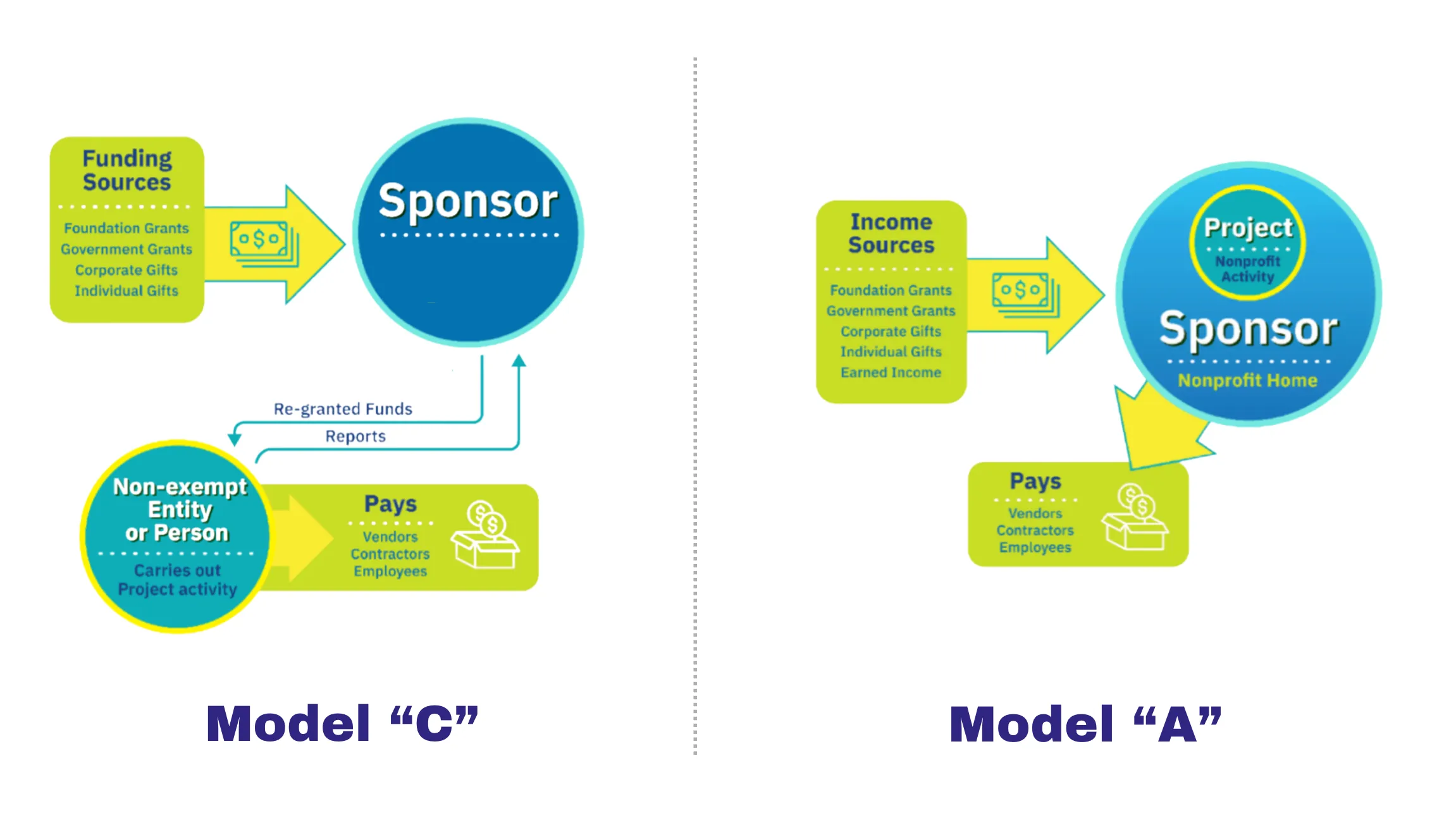If you’ve been in philanthropy or the nonprofit sector long enough, you’ve probably heard the term fiscal sponsorship thrown around.
Maybe you nodded along, pretending to know exactly what it meant. Maybe you assumed it was some arcane financial loophole. Or maybe you dismissed it as a niche workaround for scrappy grassroots groups that can’t get their own 501(c)(3).
But here’s the thing—fiscal sponsorship isn’t just a workaround. It’s a powerful, evolving tool for moving money, building capacity, and supporting social change.
And while the practice has been around for decades, it still remains a black box for many funders and nonprofit leaders.
So, what the heck is fiscal sponsorship, anyway?
A Smarter Way to Do Nonprofit Work
At its core, fiscal sponsorship is a way for organizations to share infrastructure.
A fiscal sponsorship relationship begins when a group of people with a charitable mission (like an advocacy group, an artist collective, or a set of volunteers) partners with an established nonprofit – its fiscal sponsor – so that it can receive support from that sponsor.
Instead of going through the rigamarole of incorporating as a standalone 501(c)(3), the “project” (the term for a fiscal sponsee) operates under the sponsor’s umbrella, allowing it to focus on its work without the more expensive administrative overhead of running a stand-alone nonprofit.
That’s the simple version. The reality is that fiscal sponsorship takes many forms. Some projects use fiscal sponsorship as a launchpad, a temporary home while they establish themselves. Others stay long-term, finding that shared infrastructure is a more sustainable alternative to operating independently.
The reality is that fiscal sponsorship takes many forms. Some projects use fiscal sponsorship as a launchpad, while others stay long-term.
The ecosystem of fiscal sponsors is still being mapped. In 2023, our team at Social Impact Commons partnered with the National Network of Fiscal Sponsors to provide the first significant snapshot of the field in two decades.
That scan found over 12,000 charitable projects operating under more than 600 fiscal sponsors, collectively managing more than $2.6 billion in project funds. But we estimate that there may be as many as 5,000 fiscal sponsors active across the United States supporting upwards of 50,000 projects.
From "A" to "C"
While there are more than half a dozen legal structures for fiscal sponsorship, the vast majority of projects operate under one of two models: Model “C” or Model “A”.
The more limited format is called Pre-Approved Grant Model “C”. Under this structure, a fiscal sponsor receives grants and donations on behalf of an independent project, and then re-grants those funds to the project. The project is then responsible for managing its own operations. Sponsors typically charge between 4% and 8% of revenue for this type of intermediary support.
This kind of relationship is sometimes mislabeled as a mere “passthrough", but that misses the point. A fiscal sponsor offering Model "C" support needs to conduct rigorous oversight to ensure that funds are used for charitable purposes, and bears the legal risk of non-compliance.
The other most-common type of model is Comprehensive Model “A”. Under this structure, a fiscal sponsor provides full operational support for the project, by making the project the equivalent of an in-house program. The sponsor serves as the project’s legal home, handling bookkeeping, HR, compliance, insurances, and all financial transactions.
Under this model, the project retains its own identity and decision-making power, but operates under the sponsor’s umbrella, retaining the right to exit at any time.

Model "A" is more expensive – with fees ranging from 10% to 15%, – but it can offer significant cost savings compared to running a standalone nonprofit.
For instance, we conducted an analysis comparing costs of Model “A” support with reported overhead costs of nonprofits with less than $2 million in expenses. We found that by operating under a comprehensive sponsor, those organizations would save about 50% on overhead, allowing those funds to be reallocated to front-line programs and services.
The age of fiscal sponsorship?
While fiscal sponsorship has been around since the Civil Rights Movement, the field is still evolving. What started as a way to help community-led initiatives access funding has grown into something much bigger—a dynamic, adaptive model for stabilizing and strengthening the nonprofit sector.
As grassroots organizations face increasing financial and political pressures, fiscal sponsors are emerging not just as intermediaries but as stewards of shared infrastructure. They’re filling gaps, shifting power, and rethinking how nonprofits operate.
The coming decade will see the further evolution of fiscal sponsorship as a way to organize and sustain social impact work. In an era of growing crises—from climate disasters to economic instability—fiscal sponsorship isn’t just a technical solution. It’s a way to make philanthropy and our vast ecosystem of operating nonprofits more responsive, resilient, and equitable. The age of fiscal sponsorship may be upon us.



%20(1280%20x%20720%20px)%202.png)





%20(1280%20x%20720%20px)%20(10).webp)

.webp)

